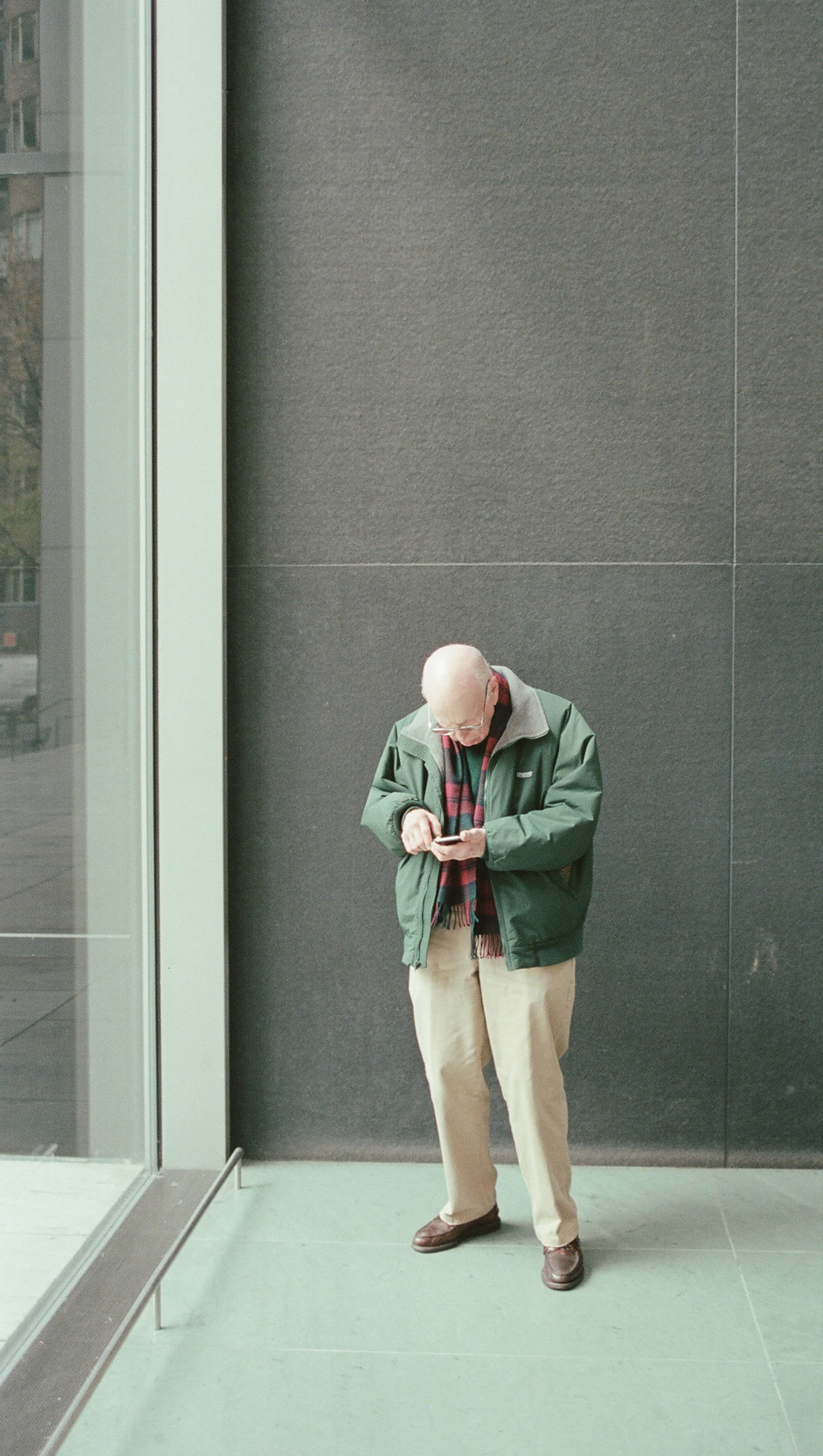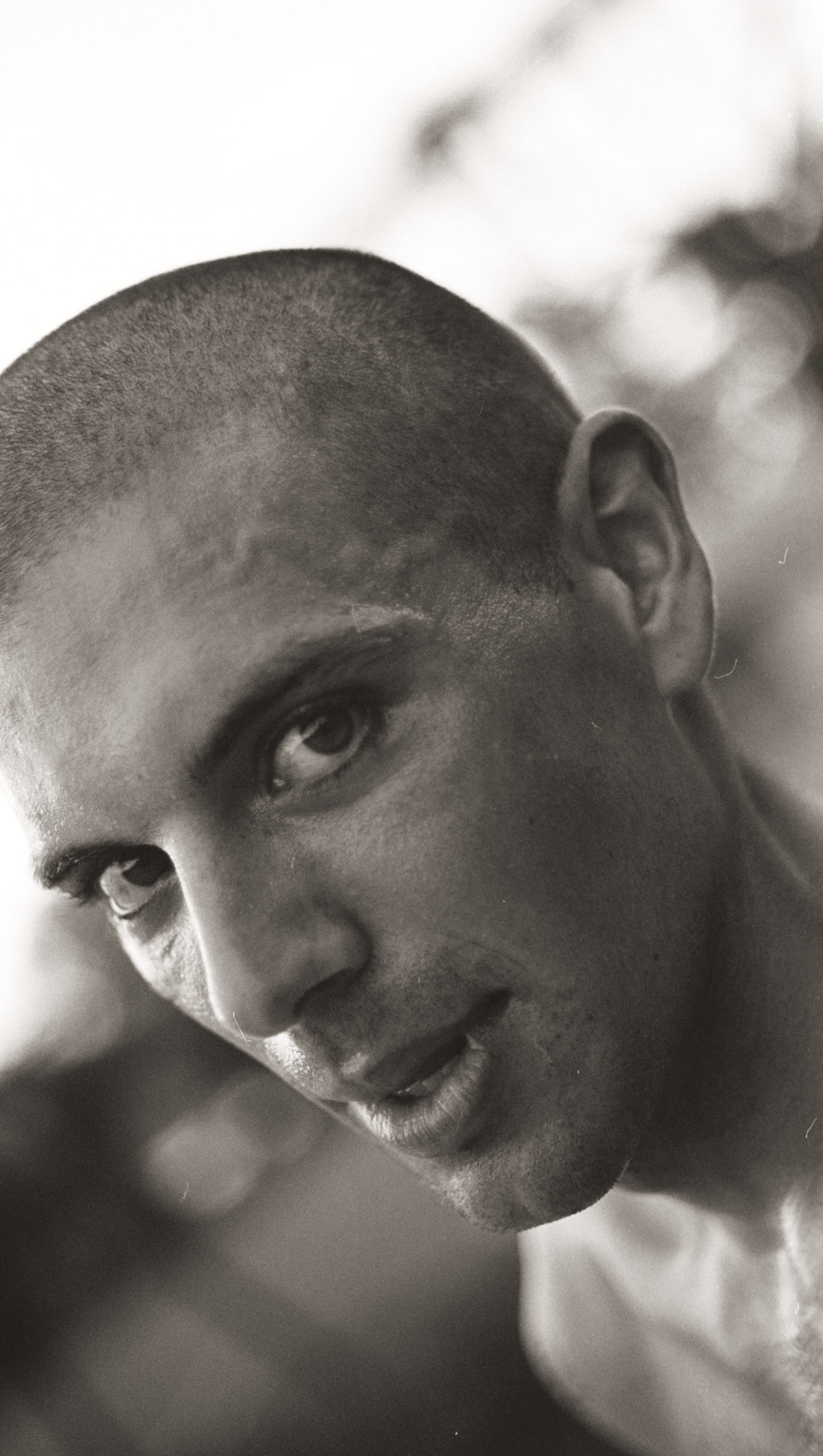Issue 7: Feeling
Take Me By The Wrist

Take a deep breath in.
Hold it.
Breath out.
Life is stressful, but you are not alone. Your wearable is always by your side. It sits on your wrist and talks to you. It rewards you for completing your step goal, or gently tells you to take a deep breath when it senses your stress. It knows you. It knows your average daily steps, your heart rate when you are active and when you are just quietly working at your desk. It knows when you go to sleep and when you get up. You are content when you hit your 250 steps an hour. And when you fail to meet your daily goal you might feel a little bit sad, disappointed at yourself. The data you interact with was generated by you, but it is not you. By the time you receive a notification from your device, your data has been transformed into a subject separate from you. A digital subject.
You are in conversation with this subject. It is alive and in the world. The data does not stay on your wrist. It is transmitted into a cloud, stored, analysed, compared and averaged with all the other datasets from all the other users. And suddenly, those users might begin to appear in your inbox. They are smiling to promote a new upgrade on your smartwatch. They are a 30-something, who is wearing leggings and Nike’s and practices Yoga three times a week. They are you, but they are not you.
Digital devices have agency. They are subjects in their own right. These so-called digital subjects are not people, but are produced in relation to their users, who are people. Through complex networks made up of human beings, algorithms and materials, they can take on different forms and become active. They interact with their users beyond the immediate body through different channels. Digital subjects have an identity through which they present themselves to their users. Their identity is not constrained to the design of the device. Similar to the example above, they can even take on an identity in the form of a human, smiling at a viewer through a set of images, making one feel good or bad about themselves depending on how one relates to them. They encourage one to change, and optimize a whole array of aspects of somebody’s life.
Devices collect knowledge about the world by tracking the processes they evoke. They enter in a mutual conversation with their user by personalizing the experience of a wearable device and, ultimately, the experience of being in the world (Goriunova 2019). Mundane, everyday activities become part of a game where you are your biggest competitor. Get healthier, fitter, faster, get a better night’s sleep.

What happens when we live with these digital subjects in the form of wearable technology? Wearable technology can be categorized as clothing or accessories that are worn directly on the body for extended periods of time. These new additions to the body can read and respond to physical feedback from that body, and do not require an active response from the wearer. Wearable device design strives to establish a dialogue and unconscious communication between the two bodies: the human body and the technological (Fairclough 2009). For example if you use a wearable for your workouts, depending on your routine and fitness level, it might push you to do more to the point where it annoys you, or it might help you relax and not get exhausted. Technologies have the power to regulate their external environment via the relationship between the device and the user. A user who wears a device, may perceive that they are wholly in control of the relationship. Their physical activity determines how the device responds to their body in motion. But in order to have optimal use of a device, the user has to follow the accessory’s rules for interaction.
The user and the device are entering a dialogue or choreography. This choreography is one in which there is an exchange of instructions, data, and behaviors. The devices are made to collect data at all times, and in order to do that, they need to encourage learned behaviours: breathing, scrolling, tapping, clicking, liking or walking. To get the 250 steps in, someone might have to interrupt their work, get up and take a little stroll around the house, or even, slyly swing an arm through the air, just to not miss out on the daily goal. If a user is constantly on the hunt for those little successes throughout the day, the device is made to successfully shapes the user’s behaviour (Wark 2019). Our devices are designed to encourage a healthier lifestyle, but they are also made to manipulate the psychological state of the user by continually nudging or triggering the user into certain actions or behaviors. The user lets go of some of the responsibility of managing their own body-optimisation.
Wearable devices influence certain but specific experiences of being in the world. The user’s body and mind is a sensing device, operationalized through carefully crafted interactions between human and non-human actors, who are all part of a complex network of information exchange and material translations. The user’s physical body takes actions in the real world by moving with the device always on its side. The device learns from these real-life activities and modulates them accordingly. The user and the user’s device communicate directly through sensory stimulation, entering, a dialogue without the interference of consciousness or representation.
Any influence on psychological or physical states of being by an external tool are not, by default, problematic. But the question of who is really in control over this manipulation still remains ambiguous. And there are ethical issues that arise when the wearer is not fully aware of how the device works and has no control over the experience they are receiving, when they are treated as passive recipients (Picard and Klein 2002). Designing personal technology and applying user interaction is developed and implemented by real people. It is the designer’s responsibility to control or, to put it loosely, meddle with the movement and behavior of human beings.

When the personal device collects data about its user, it assembles a picture, a statistical representation or, in a sense, a data double, of the user. Based on algorithmic manipulation of the data, the device provides preprogrammed feedback on the physiological or psychological state of the wearer. “Take time to breath, relax.” or “Come on, keep moving” are encouraging phrases based on the assumption that the user is, in fact, holding stress, or, conversely, not working hard enough. These notifications can reinforce a user’s self-perception, but they can also contradict it. You might just be watching an exciting movie, relaxed in your bed, when your heart rate goes up and your wearable tells you to take a deep breath and relax. It can come as a surprise, if you are having, let’s say, a chilled night. This externalisation of a feeling in contradiction to the self-perception might lead to user relying more on a manufactured ‘other’ than on their own, long-habitual, experience of being.
The more users rely on technology to gauge their emotions and feelings, the more devices can have the power to interfere with those emotions and feelings, thereby the device develops a relationship with the user and is programmed to care about the user. However, the human body will always remain a measurable object for a sensing computer. A device can only ever “manufacture” real care for the user, since they don’t have any emotions (Fairclough 2009).
The long-term effects of physiological systems on a user’s physical and the mental sense of being, are unclear. And the relationship between the user and technological device is becoming increasingly more social, in its veering away from a kind of user/servant relationship. A mobile phone has an almost hypnotic essentiality to its owner than ever being considered merely an object of communication, easily replaced. Every relationship we have in life contributes to the shape of who we are. And every interaction carries the potential to affect each actor, as do the dialogues between human and non-human shape each individual act of human becoming. Brian Massumi (2002) describes this mutual becoming through affect. He defines affect as an experience happening within every relationship between bodies, objects and the self. Affect is embedded in all forms of bodily interactions. Every interaction implicates the exchange of information through touch, movement, gaze or heartbeat and, unconsciously, alters the experience of being human in the world (Venn 2010).

By tracking our steps, we may begin moving differently through the world, as we aim for a daily goal. We take the long way, the stairs instead of the elevator, and thus alter the course of events in our lives. Smartwatches and specifically designed wearable devices encourage a user to be physically active, and are made to guarantee better health by offering stress relief and optimizing relaxation through monitoring physiological signals, such as heart rate and breathing patterns. If devices uncover any signal of stress, they are programmed to engage their user in some behavior, learned or otherwise. They might suggest, for example, that the user take a deep breath, in order to normalize their physiological values, constructed, in part, by the nature or make-up, of their psychological reaction. Appreciating a moment might not come from an internal state, but from the relationship with a personal device. Technologies can impact and alter one’s relationship to other people, as well. And to the environment and, finally and most importantly, oneself.
Wearable devices don’t have to be digital to change the relationship we have with our environment. A simple wristwatch allows us to always know the time, to know when we’re running late for something or if we will be able to make it. Movements, like walking faster, will be adjusted to the information the wearer, or user receives from the watch. The wearable sculptures by the artist Rebecca Horn question how bodies relate to their surroundings and how bodily extensions reach out into the world or to other people in novel ways. Her performative pieces such as “The Pencil Mask,” show how a physical extension to the body changes the way the body moves and senses the world, embracing unexpected behaviours.”
“The Pencil Mask” is a face mask with pencils mounted on it. In the performance, Horn approaches a white wall with her face and starts moving from side to side in front of it and draws, leaving marks on the surface. The artist’s movement brings the pencils to scrape against the wall and create a repetitive sound. In this way, the efforts—to draw by moving the head and the body’s submission, create a pattern of movement, altering her relationship between her body, the wall and eventually the room the artist is in. Wearable devices are changing a user’s relationship to the world they live in, with a body, and the world that lives within them, with the mind.

The human body and its senses are constantly informing our understanding of the world. Since wearable devices build new interfaces between the body and the world, meddling with the self perception and choice between differing behaviours, they could potentially have an unprecedented impact on what it means to be human. The self and identity could become evermore fractured and managed by those who produce the technologies. Looking at human-computer interactions as dialogues, scripts or choreographies performed by two bodies could help to understand the impact of technology on day to day life.
References
Andrejevic M (2015), The Droning of Experience In: The Fibreculture Journal 25, pp. 202– 217. issn: 1449-1443. doi: 10.15307/fcj.25.187.2015.
Andrews S, Ellis DA, Shaw H, Piwek L (2015), Beyond Self-Report: Tools to Compare Estimated and Real-World Smartphone Use. Digital Object Identifier.
Bassett C (2019), The Computational Therapeutic: Exploring Weizenbaum’s ELIZA as a History of the Present. Digital Object Identifier
Fairclough S H (2009), Fundamentals of physiological computing . In: Interacting with Computers 21, pp. 133–145. Digital Object Identifier: 10.1016/j.intcom.2008.10.011.
Picard R W, Klein J (2002), Computers that recognize and respond to user emotion: theoretical and practical implications. Interacting with Computers 14, 141–169.
Goriunova O (2019), Digital Subjects: An Introduction. In: Springer Nature Limited: Subjectivity 12.1, pp. 1–11. Digital Object Identifier
Klemmer S R, Hartmann B, Takayama L (2006), How Bodies Matter: Five Themes for Interaction Design. DIS 2006, June 26–28, 2006, University Park, Pennsylvania, USA.
Kulms P, Mattar N, and Kopp S (2016), Can’t Do or Won’t Do? Social Attributions in Human–Agent Cooperation. In: 15th International Con-Ference on Autonomous Agents and Multiagent Systems. Vol. 15. Singapore: International Foundation for Autonomous Agents and Multiagent Systems.
Latour B (2005), Reassembling the Social. An Introduction to the Actor-Network-Theory. New York: Oxford University Press.
Massumi B (2002), Parables for the Virtual: Movement, Affect, Sensation . NC: Duke University Press.
Venn C (2010), Individuation, Relationality, Affect: Rethinking the Human in Relation to the Living. In: Body & Society 16.1, pp. 129–161. Digital Object Identifier: 10.1177/1357034X09354770.
Wark S (2019), The Subject of Circulation: On the Digital Subject’s Technical Individuations. In: Subjectivity 12, pp. 65–81. Digital Object Identifier
